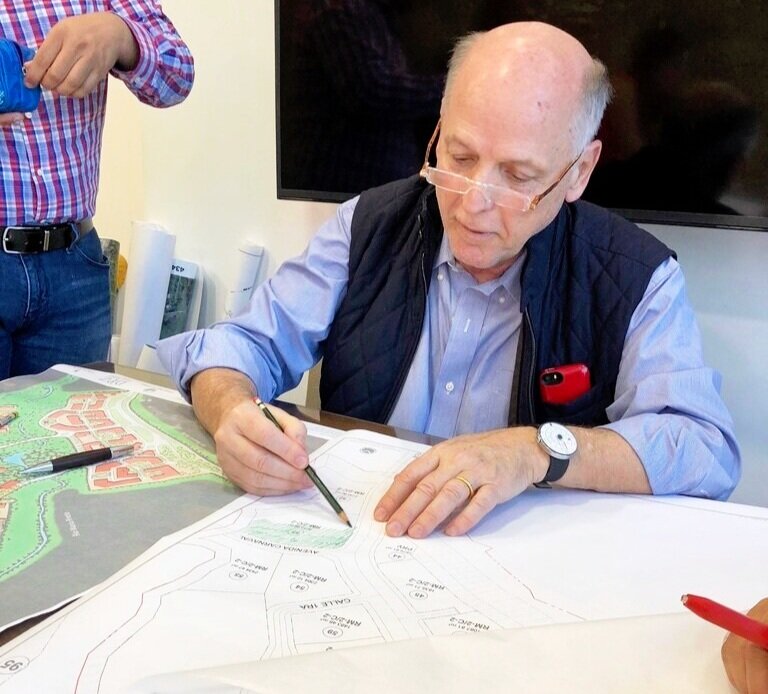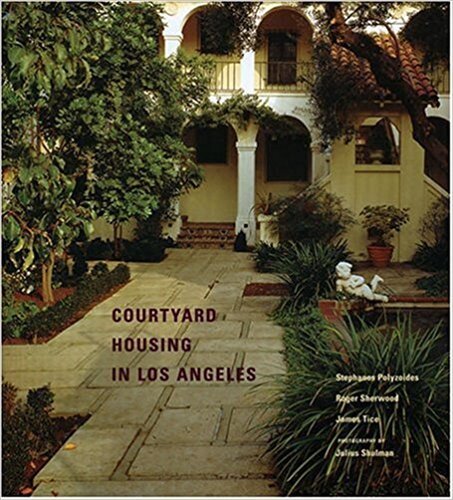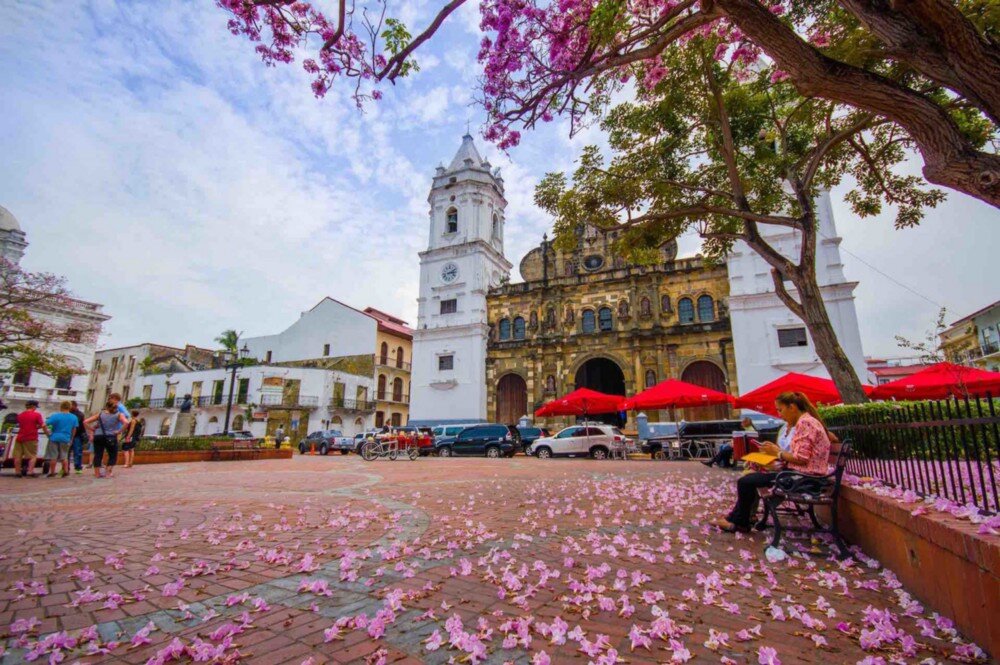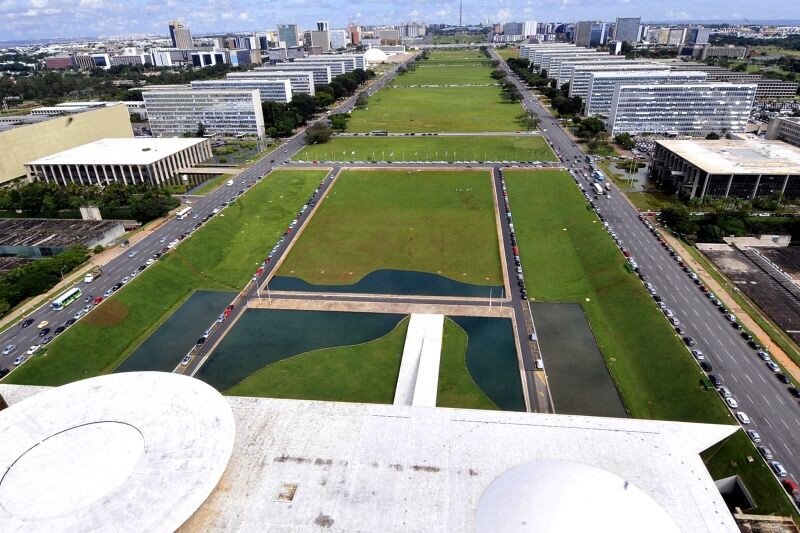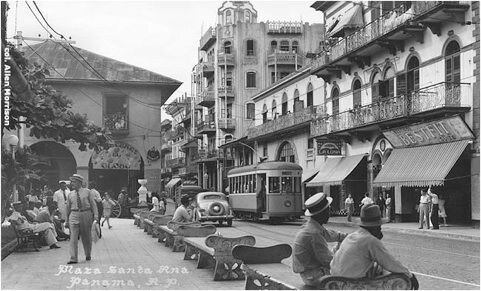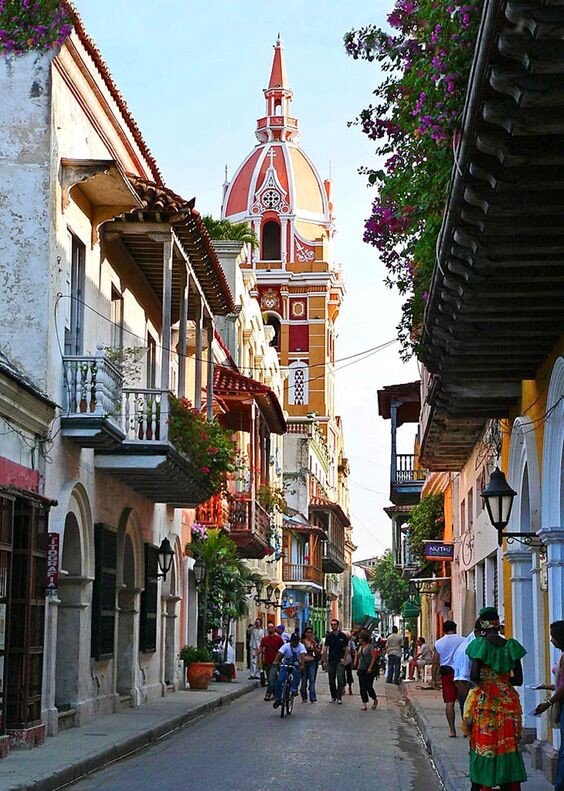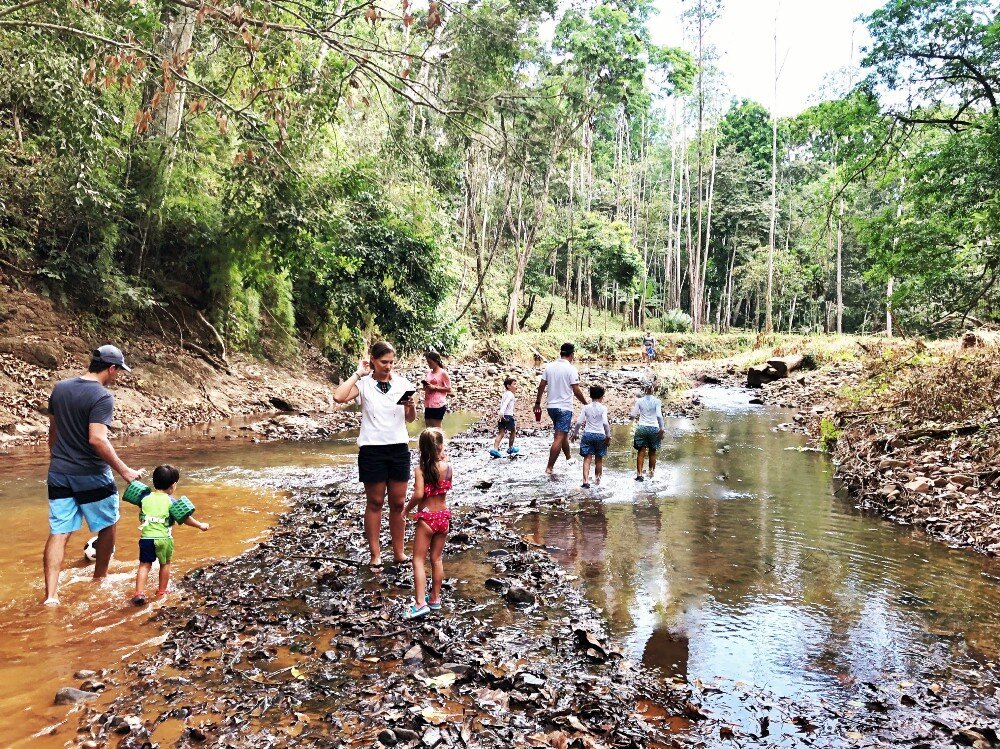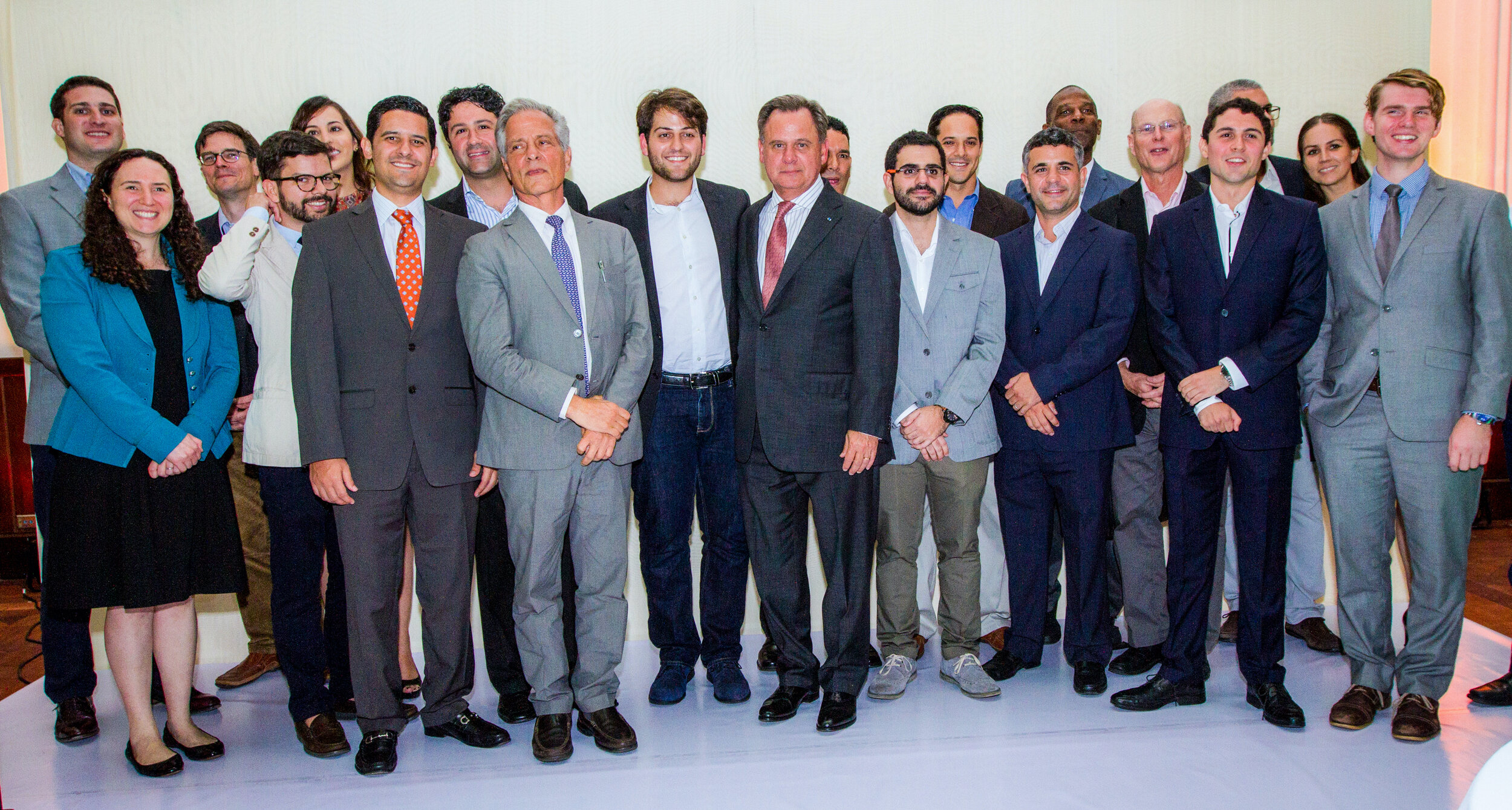Talking to Stefanos Polyzoides about architecture and urban planning in Panama.
Video version on the Porta Norte Youtube Channel.
(transcript en español) Hello! Welcome to learn more about the philosophy of Porta Norte. This is a transcript of the conversation recorded on youtube. In this episode we explore the roots of Porta Norte, the present of Panama, how it should be and the importance of public spaces. This time around we have Stefanos Polyzoides. Stefanos is the co-founder of the Congress of the New Urbanism and founder of the firm Moule & Polyzoides in Pasadena, California.
Moule & Polyzoides was founded in 1982. They have extensive national and international experience. From 1973 to 1997, he was Professor of Architecture at the University of Southern California. From 1983 to 1990 he was also an advisor to the School of Architecture at Princeton University. Stefanos presents on new urbanism, transit-oriented urbanism, mixed-use and sustainability worldwide. He is co-author of Los Angeles Courtyard Housing: A Typological Analysis(1977), The Plazas of New Mexico(2012), and author of R.M. Schindler, Architect (1982). Porta Norte works in conjunction with Moule & Polyzoides to develop and maintain the architectural vision.
Henry / Stefanos
Stefanos, welcome back. It's very good to see you back in Panama. We had a very productive day today. Tell me, what did you think?
It is always good to come to Panama. That's why I come frequently. Let me start by saying that this is an extraordinary master plan, designed by Duany Plater-Zyberk (DPZ). The most important challenge for Porta Norte is to do traditional architecture and urbanism in a place where it has not been developed in this way for at least 100 years.
The way of development is not in our favour, however, people are very interested and eager to know more. The problem is that the professional depth and knowledge to carry out this type of traditional projects is very limited in Panama.
Today I was impressed by the enthusiasm of the architects and developers involved in Porta Norte. I enjoyed the vision and curiosity of everyone involved. Everyone wanted to know more about how to do architecture and urbanism better.
There is a big movement in Panama. As a society, we have begun to understand that we need urban design focused on people and not on the car. The city is shifting towards being more pedestrian-friendly, but we have a long way to go. How does Porta Norte fit into Panama's ideal future?
I have been coming to Panama constantly for more than 10 years. We have a lot of work here. I have been impressed recently by how much and how fast the city is changing. A lot of good things are happening. The Municipality is cleaning up, planting trees, taking care of public spaces, building rules are being modified, and of course, projects like Porta Norte and many others are being implemented, which slowly but surely are changing people's perception of what it is like to live in the tropics, what it is like to live in the city centre, what it is like to live in the city limits, and what values, life values or civic values can exist. This leads to a stronger civic life and a stronger relationship with the environment.
"Porta Norte will awaken the market, will excite especially the younger generation and, in the end, will be tremendously successful". - Stefanos Polyzoides
In Panama there are at least 6 pedestrian-focused projects that are changing the course of typical development, making it clear that there is a huge demand for people-focused spaces. I must say that this phenomenon is worldwide, not only in Panama. It is the result of more educated societies. The norm has become to build better and think more about the future of their cities and their resilience.
Unfortunately, we tend to think of our lifetimes as the true measure of the passage of time. But frankly some of these processes and movements are so slow that it can take more than 100 years or 200 years to make this profound change. Panama has not paid attention to urban planning and architecture in a long time and has many disasters to correct.
There is hope. This kind of development is the way of the future, it is something that is really at the forefront of what is happening in Panama and everywhere else.
How many years would you say we have been building car-focused suburbs in Panama?
For at least 30 years. Unfortunately the urban design was imported from Florida firms, which are very close physically and culturally. It was also imported by Panamanians who studied in the United States, who taught them the wrong urban development. The leaders, with good will, ended up making disasters. They created a car-dependent city, cutting down its forests, building almost exclusively for self-interest and not at all for civic interest.
In Porta Norte we have a special challenge, in which we have to study the DNA of our city, which is the Old Town, which is very small. What should we use as a north to interpret the best urban design?
Plaza Catedral, Casco Viejo, Panama (Human scale).
Small as the Old Town may be, it is truly beautiful, complex and very deep in essence. Its existence has fostered a revolution on the real estate front. Casco Viejo was destroyed 10 years ago. Today its public spaces and most of the buildings are completely renovated. It is the most expensive piece of city in Panama. Demand is talking.
You are adopting the slogan "The New Old Town." This is very smart because this is the way to the future. If Casco Viejo works and is the most expensive real estate in Panama, why not build more? That's the classic question of new urbanism.
Developers often travel to pedestrian-focused cities such as Madrid, Barcelona, Paris, New York and Casco Viejo. They always say they had a wonderful time walking around and enjoying public spaces. It's funny and ironic that developers, after enjoying these places so much, don't come to the conclusion "I love this place, I'm going to try to make more places like this, more places I love" Why doesn't this happen?
Brasilia, Brazil. (Non-Human Scale)
Between 1920 and 1940 the modernist movement was born, which was based on principles that were focused on the scale of the automobile and not the pedestrian. This was the beginning of the decline of public spaces. This influence permeated and worsened urban design worldwide. We tend to be enchanted by cities conceived before the modernist movement.
All of this leads to an answer I wanted to give you to the previous question, which is really the essence of today's conversation, which is how do we follow the example of pre-1920s urbanism and adapt it to today's needs?
The quickest way to do this is to say "well, this building we are going to build is Mediterranean, this one is French and the third one is English" and copy the same elements of a 2-storey building into a 5-storey building. However, this would feel fake. It is a purely stylistic exercise. This technique can sometimes help, and even succeed in the hands of a brilliant architect, most of the time it feels superficial, and in the end, it ultimately fails.
It is extremely important to understand that architecture is not about individual designs. Architecture is about responding to its environment. Whether this environment is a neighbourhood, a district, a block, a hill, a corner, etc., architecture is dependent on the world around it, not independent. Architecture is dependent on the world around it, not independent. It is dependent on the structures and nature that surround it. If you understand that architecture is dependent, then you can look at Casco Viejo and say "what am I seeing here?" "What am I learning here that is special?"
The first thing you learn is that it is a human scale. The way people interact internally and externally is what starts to shape the buildings. Then you start to realise how the buildings are configured and how they respond to human culture and nature.
Modernist buildings respond poorly to nature and local culture. It's the same glass façade, copy and paste, from cold, temperate climates to tropical climates. It's the same thing over and over and over and over and over again. On the other hand, when you watch people walking in Casco Viejo you can see how this architecture responds very intelligently to the hot and humid climate that exists. Therefore, architecture that responds to the tropics is what makes for comfortable and happy living. If you look carefully you can begin to draw these lessons. You have to use these lessons for the urban and architectural design that you are going to execute.
Do you have any specific examples of these lessons?
Here is my thought structure. You have to postpone the style conversation, because first you have to ask some questions and make some decisions. The first thing you need to ask yourself is what type building is, i.e., housing, commercial, mixed-use, educational, etc. The type, particularly in a housing project, stems from the relationship of the building to public and private space, how it responds to the exterior and interior, and parking.
Parking spaces are probably the most important ingredient to define early. It is important to hide them and make them work well. After determining this, you start defining the building in a way that defines the street, the public and private space. When you do this exercise, suddenly you have the DNA of how to not only create a building, but how more buildings of the same type can start to spread in the city. Buildings are the cells of the city that together start to make blocks, blocks make streets, streets make squares, blocks and streets make public spaces and together they create the urban fabric.
The most incredible thing is that we do not understand that it is the variety in typology that most influences the form of the city. As a result of modernism, today, every single thing we do in the world looks exactly the same. So you have a culture of the past that had no resources, that produced beautiful and unique cities. You have 20th century urbanism that is not only bad in its form and quality of life, but definitely the same everywhere. This is a huge problem, as our cities have gone into decline.
After defining the type of building we have to examine its environment and react to it. The same type should vary depending on its environment. A project is very different if the same type is located in different environments such as a corner, a hill, ending a street, in the middle of a block, etc. The same type in six different locations can really be configured in different ways.
Reacting to its surroundings can mean that the form of the building can change. You can have 4 storeys on the façade facing a square and 2 storeys at the back to frame a public space and at the same time have good views and open sunlight by going down from 4 to 2 storeys.
We start by choosing the type, then we place the type in its environment and then we discover the reason why the building has a raised ground floor...for visibility of the retail products, or why there is a straight tower on a corner...to take advantage of the valuable corner floors with good views, or why it has a staircase at the back...to facilitate the link with nature. By the time we have all these considerations in our heads, then, of course, we have to understand the inside and the outside of the building simultaneously, then we are ready to give a style to the building.
Plaza Santa Ana, Casco Viejo, Panama.
But the important thing is that all 3 of these considerations, the typethe environment and the style of the building are understood at the same time from the inside and the outside. When you do this, take inspiration from Casco Viejo and understand the basic architectural elements of Casco Viejo, then you can begin to put together an architecture that may not be exactly the same type, nor the same environment, but similar in style. It all comes together in an architectural language that is derived from the culture and climate of Casco Viejo Panama.
You are not repeating or copying Casco Viejo, we are interpreting it and drawing conclusions.
Architecture is not about repetition, it is about inspiration, interpretation and evolution. It is about the evolution of architectural language, not about choosing an architectural language and keeping it still and rigid.
The human race has the capacity to understand traditional form as a powerful precedent, something that has been done before, that is proven to work, and there is the Old Town in front of us in all its splendour. It is important to understand the architectural elements, to master them and use them to adapt to the realities we have today. The wonderful thing about the notion of traditional architecture, is that it is not tied to what I do or what I am or what I say; yes, that is important, but it has to do with how others have done it, what they have left us and how we can take all that and transform it in the terms of a new city.
To do this is a huge feat. It's very exciting. One of the things we are trying to do at Porta Norte is to encourage young architects, young professionals and not so young professionals to join us in a learning exercise that will allow them to become more aware of how to interpret existing places in order to advance the work of Porta Norte, perhaps in the form of a guild and begin to build in ways that support Porta Norte.
Cartagena de Indias, Colombia
I must clarify that this architectural language, the language of Casco Viejo, is not a final result, it is not something finished or finite, it is not the end of Hispanic architecture. You have to understand that Panama was a very rural place, it was a village in the north of Colombia, it was a practically forgotten place. There are some pictures in this office that show what Panama City was like in 1880, it was a village, and therefore it was not a sophisticated place with sophisticated architecture.
By comparison, Madrid was a world metropolis in 1880. Panama's culture is a culture that derives from many cultures, but where Hispanic and American influences predominate. They come together to create a beautiful culture. So, looking at the Hispanic side you can say they have Casco Viejo, which is a spectacle, but, you shouldn't stop there. All you have to do is get on a plane and within an hour you can be in Cartagena. Cartagena is a magical city where you can learn as much or more than Panama, since Panama used to be Colombia anyway.
Or you can go to Malaga, Seville, Cordoba, Bilbao or San Sebastian and learn about cities in the fundamental format of Hispanic culture, post-industrial, pre-industrial, medieval, renaissance, whatever pillar you are looking for. You can study these places and learn their form elements which can greatly expand your vocabulary of city form. Whether you are studying blocks, streets, building types or techniques, whatever you are studying you can immensely enrich your language and your personal knowledge as an architect and developer, and therefore when it comes time to design or develop, you have a tremendously sophisticated vision and therefore can design with better mental tools and a greater imagination of the future.
Seville, Andalusia, Spain.
What advice would you give to young architects or people who want to understand this language and expand it when they have the opportunity to go to Cartagena de Indias or Seville? What methods do you recommend for absorbing, expanding and interpreting the language?
Education should be about that and it is not, most architecture education is not. The first thing I would like to say to a young architect is that architecture is not about you, in the same way that music is not about you. Think of Beethoven or Mozart, they were the geniuses who gave us that music, but 200 or 300 years later, it's everybody's music. The purpose of making music is not to glorify Mozart, the purpose of making music is to glorify the human race; it's to give it pleasure and to elevate it, to make life worth living. The first thing you think when you hear the ninth symphony is "oh my God, Beethoven was a genius", no, the first thing that happens when you hear the ninth symphony is that you take a deep breath and say "my God, how can I exist and not know this?" It makes you different, it makes you a different person, if you understand.
It's exactly the same in architecture. I am the medium through which this building is built, or this neighbourhood is made, but I am going to die in 20 years. So what I leave behind is a legacy of value and pleasure of real importance to humanity. This is not about me or you, it is about our great-great-grandchildren and their grandchildren, whom I will never meet. We must all understand our life as a generational handover, a great obstacle course where one goes as far as one can and as time goes on passes the baton to the younger ones. We have to plant trees where we will not live to enjoy their shade.
The second thing is that you have to start to understand architecture in a different way, to know that architecture is not an object, it is an object in an environment. You have to start understanding architecture always in the environment of a block, and then understand architecture in its ability to create spaces with urban life between blocks. If you understand that the façade of the building in a city block is defining and creating the public space, you could never design the building in the same way.
I would tell an architect that he has to travel a lot and study the nature of the buildings that exist in old cities. How they have responded to nature. How buildings react to nature and their environment to create useful and comfortable places. That's a beautiful thing to study.
Finally, I would ask architects to think about how buildings are built, why they are built that way and why they look a certain way. It is important to observe and appreciate the fact that there are rational components in them, they are built at a scale that can be repaired, so that the components are proportional to the human scale; that much of what is beautiful about them is how people react to them, touch them and relate to them, as opposed to blind walls, car parks or perimeter walls that completely turn their backs on public space.
This would be a profound beginning for an architect. To see their work as part of an environment and a complex set of design challenges, to see the building as part of a language that contributes to the creation of blocks and in turn to the creation of public spaces. Then to see the construction of the building as related to the human figure and our ability to reflect ourselves in architecture. The walls, doors, windows, columns and architectural elements at first glance do not seem to be related to us, but in fact they are completely related.
For example, the reason why Mediterranean tiles are shaped the way they are is because people used to put them on their thigh. The height of the window is about the height of the body, the width is up to half your body with your hands stretched out, it's really a piece through which you can physically extend yourself outwards. It's made according to the human figure. We have forgotten how to make buildings that way and we have to get back to doing it right and fast.
This is about profound change; I mean, you asked a very difficult question and I gave you a very difficult answer because, you know, this has to be done on a global scale. This has to be done by everybody, everywhere in the world so that we can be united as a human race.
We talk a lot about public space and life between the blocks. What changes in society does it bring about to have good public spaces that are human-centred and how does that affect the way we live? How will having good public spaces change our daily lives?
Dense nature of Porta Norte, Panama.
This is a very important question. First of all, there are two types of public spaces and Porta Norte does it brilliantly. We have to thank DPZ for that. Before we start building the place, we have to interpret it; we have to interpret its flora and fauna, its physical configuration. In the case of Porta Norte it is the ancient forest and its incredible rivers.
Because of the amount of rain that falls in Porta Norte I would imagine that, taking into account the size of Porta Norte, that they will end up developing probably half of it and leaving the other half undeveloped, which means they must know exactly where they build and why, and what they don't build and why. The fact that you have a forest that represents 50% of the site automatically means that you are building densely in dense nature, and that is the balance between dense nature and dense city. Porta Norte is low rise, high density with a beautiful, dense forest. It is spectacular. This is a natural environment and public space that should be at the heart of new urbanism...and it is, in the case of Porta Norte.
Typical section of the Boulevard. Porta Norte, Panama.
The other type of public space is the more conventional, but equally important, public space of human interaction that occurs between buildings. Urban life of which we learned in Rome with Nolli's plan.
The answer to your question is very severe, for, the nature of the crimes against humanity that are being committed on the outskirts of Panama City where people are clearing forests and destroying them to build repetitive, shoddy, substandard and terrible suburbs. They end up building in configurations that literally have nothing to do with creating places of human interaction. I'm thinking of moulded buildings with car parks in the front, which is what most of these low economy buildings on the periphery of suburban Panama City are.
What these things end up doing is atomising families. They end up isolating themselves from each other, there are no neighbours, there is no sense of neighbourliness, there is no sense of community, there is no sense of belonging, and this atomisation leads to a civic disconnect and leads to a lack of empathy. As a result, some idiot comes along and says, if you have blue eyes you are not equal to someone who has brown eyes. Then people need to become blue-eyed, because they have no way to relate to other people, because they have lived in a bubble their whole life. They don't come to the understanding that "this guy next door has brown eyes, but hey, he looks perfectly fine, why bother?"
This atomisation and isolation is what generates the lack of public space. I would argue that the tremendous isolation and political disconnection in the US in the Trump era has a lot to do with the consequences of suburban sprawl and social isolation that is the result of 50 years of US expansion without public spaces.
I live in Casco Viejo. Something that has struck me is the importance of public spaces for the development of culture. There is a direct correlation between public spaces and culture. Culture is the ultimate expression of community.
You're thinking about art, music, poetry, discussion, interaction with people, yes, absolutely.
Festivals, conversations, imagination, creativity?
Yes, absolutely, this is a very important thing to mention, because I talked about having neighbours and random interactions, you are talking about organised interaction, both are very important in public space, you are absolutely right.
Porta Norte is in its early stages, and will be alive and progressing for thousands of years to come. At this point in time, what do you think are the things we need to focus on to get things right and what advice would you give today to developers, architects, citizens and everyone involved in Porta Norte?
Porta Norte design week celebration with the Panama team, DPZ and Andrés Duany (2015).
Let me tell you, they have a wonderful master plan and very skilful leadership. Everyone who is involved in this project, they feel very passionate about going through the journey that they have gone through. They have made very positive and important investments and I am sure it is going to be a great success.
One of the most important questions to address is how to minimise mistakes. Mistakes are very common, very necessary and very important because we will all make mistakes, just as we have all made mistakes, but we have to recover from them and not repeat them. I would say the biggest challenge you face at this stage is to join forces with people who see this as a big investment, as well as those who see it as a positive cultural movement. They have to make sure that architects design according to the values of Porta Norte. They have to work with developers who think of Porta Norte as a medium to long term project, that if they develop in Porta Norte and do it well, they are going to create incredible value.
The most challenging thing is the first steps, because if you make a mistake that is serious at the beginning, it can result in people coming up and saying "is this what you meant?" and not liking it. If, on the other hand, the first steps result in a place where people can deeply identify then the development will improve and accelerate dramatically.
One of the promising things about Porta Norte, which is unique and unusual, is that, because it is in Panama City with a lot of people around it and adjacent to a main road, it can have a Town Center built from the ground up; a pedestrian, mixed-use, new urbanism centre that speaks to the presence and vision before the buildings are built. Then it would be easier for you to sell the lifestyle and it would be easier to convey what all of Porta Norte can be. This way it is easier to convince people that there is life here and they should be part of it.
At the same time, it is incredibly difficult anywhere in the world, but particularly in Panama, to build 40 buildings on streets and blocks and have them merge in harmony, because there is very little experience in doing this and doing this well. That's why I'm here and that's why we're talking about this.
It is a great feat.
You need to do the first phases with great direction and support; you need to do the next phase with less direction; and you need to do the third phase by yourself.
It's like learning to ride a bike, you know, you get your bike and you get someone to help you ride it. You learn to ride it and then you can go to school only after 12 years. That's where we are, I think. I'm here, not just to instruct, but to learn and help them become the authority that they need to become to be able to do this right.
You have been a great teacher.
Thank you, well, it's in my blood. This was a great conversation. These concepts are very important to spread, don't you think?
Definitely.
Please subscribe to our mailing list, youtube channel, follow us on facebook, instagram and twitter. Check out our Porta Norte website. Help us spread the word and tell people about Porta Norte.


